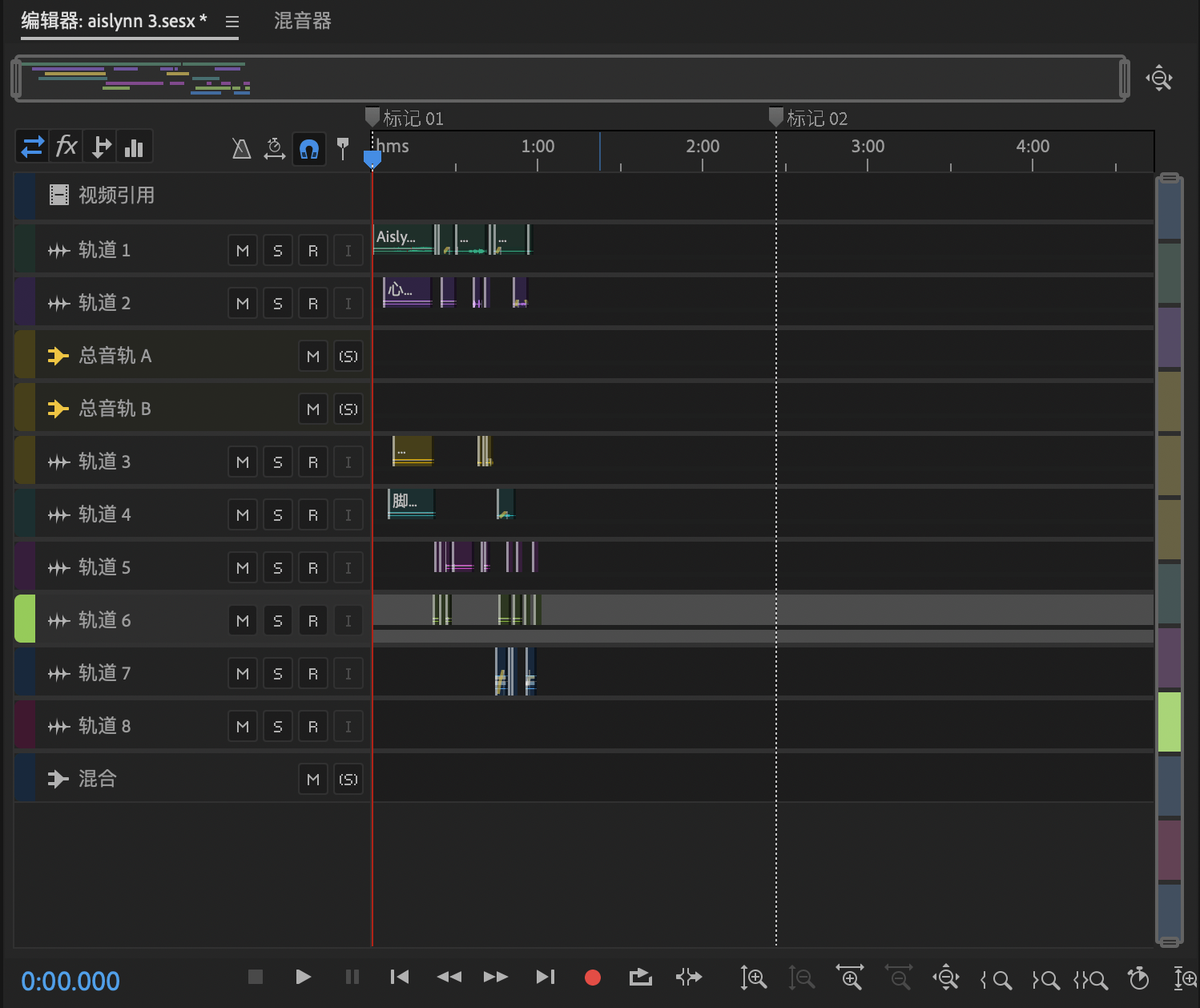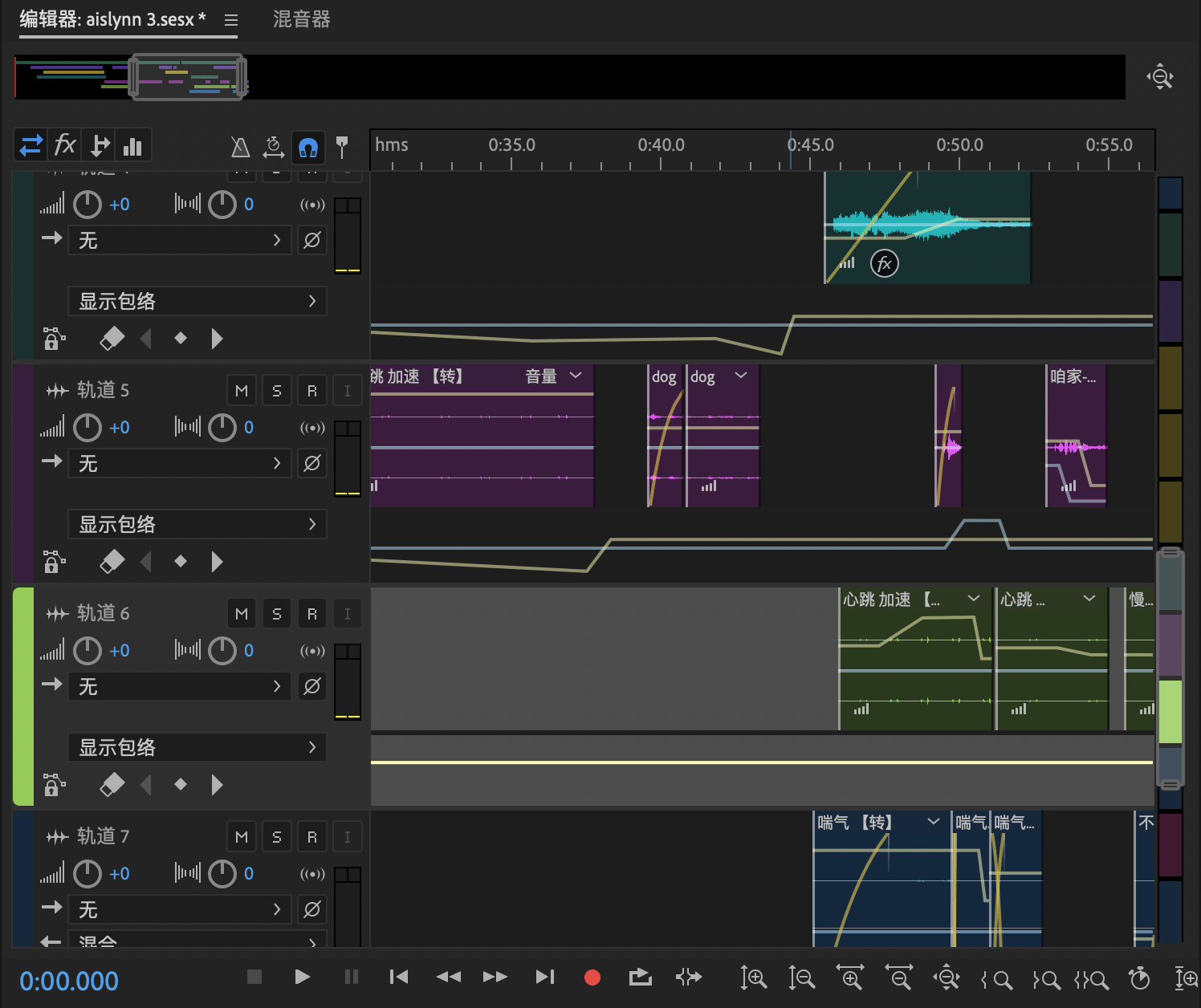Here’s my memory soundscape:
A. Concept
- Memory
The memory shown in my soundscape is my experience in an AI exhibition. The exhibition was in a white, and empty huge room that was filled with machines making machine-like noises. So in the beginning, I was drawn into this cold, lifeless, and even alienated world that was ruled by machines. As a result, I was panic and lost in this other world.
Then I saw an exhibit that connects to several cameras around the world. Through that exhibit, I saw a part of the human world on the other side of the earth. I was immersed in that warm, cozy, and vibrant world.
Eventually, my thoughts came out of this exhibit and returned to the showroom. But at this time, this exhibit is no longer a cold world of machines, but a place where machines and people harmoniously live.
Here’s a recording of that exhibit, showing the camera placed in the exhibition:
- Design
So what I want to convey is the emotional fluctuation of this whole memory, from the initial panic and anxiety to the sudden joy, to the slow release and relaxation after returning to the original environment.
I also wanted to present two scenes through sound, a cold world of machines and a warm world of humans. And I hope that through sound I can convey the integration between these two scenes.
So my soundscape also consists of three parts. The first part is the world of machines. I wanted to use the sounds of machines in the real world and superimpose them with the sounds of real machines that I went to that exhibition and recorded. What I hope to achieve is an otherworldly and cold feeling.
In the second part, I wanted to show a warm human world. At first, I used some sounds that humans would make, such as walking sounds, eating sounds, and so on. But this does not have enough sense of image, and it is easy to make the listener confused. So I chose to build a roadside performance, using some of the cheering and singing sounds I had recorded earlier, to create a warm human world feeling.
In the third part, I initially tried to mix the voices of the first two worlds, which also tends to confuse people. At the suggestion of professor Ian, I chose to use the voice of a child laughing. From the plot perspective, it expresses the child being amused by the machine. From the emotional perspective, it expresses the feeling of harmonious coexistence between machines and humans.
Finally, to have a more convincing emotional experience. I recorded the sound of breathing, heartbeat, and walking and carried it through the whole process to serve as an emotional cue.
B. Process
- Machine World
In the first part, I recorded a lot of sounds made by machines, such as elevator sounds, refrigerator sounds, and microwave oven sounds. I used the regular dripping sound of the machine as the beginning and the sound created by the exhibit as the end, which has a sense of gradual progress and getting closer to the climax.
The harder part was how to make them sound not like individual machines, but a world of machines. I used the museum as a base noise and added delay effects to make the machine sounds blend as much as possible.
- Human World
In the human world, it is impossible to record aggregated sounds because of the epidemic. I could only extract the sound of people cheering from previously recorded videos. In this clip, as opposed to the machine world, I used wind chimes as the beginning and end. I wanted to create a sense of sudden start and abrupt end through the wind chimes.
I also used panning to get the overall sound from the far left to the far right, with a sense that the camera watching this roadside concert was moving from right to left. And this image slowly moved out of view.
- Harmonious World
The third part was the one I changed the most. I first cut out the child’s laughter from a previously recorded video of my niece playing and used it as a lead-in to my emotional transformation. Secondly, I added a lot of bird sounds, dog sounds, and even the sounds of people talking and cheering, as proof that the human world and the machine world are merging.
But I found that it would be too cluttered. So I chose to end with a peaceful mood to reflect the harmony. At first, I chose to make the breathing and heartbeat less loud, but it seemed like “I” was far away rather than calm. So at Jane Wu’s suggestion, I recorded a deep breath and slowed down the “heartbeat” to show that I was at peace. I also added the sound of wind chimes at the end to represent the peaceful human world coming back to my heart. In this part, I used the reverb effect to let the emotions fill the final sound. I tried to be closer to listeners as if letting them enter the inner world of “I” and feel my peace together.
- Emotion
As the emotional thread of the whole piece, the sound of heartbeat and breathing is undoubtedly very important. But the recordings of both were more difficult.
I tried to record the real heartbeat, but it was almost impossible to record. So I learned how to use a towel to simulate the sound of a heartbeat in the ASMR community, and the result was still very satisfying. Here‘s a video of using a towel to mimic the sound of the heartbeat.
The difficulty in recording the breathing sound is not to include the sound of air. Because there is no professional equipment, I tried a variety of methods, including adjusting the distance and position of the phone, whether to cover the mouth with a hand, etc. Finally, I managed to record the breathing sound without including the air.
- Learning
I learned that more may not mean better. I needed to choose the voices involved very carefully and make each one bring a reasonable use.
I also learned that I should think from the point of view of the listener rather than from the story itself. I need to know if I’m using these voices to make the audience understand the story, rather than just focusing on whether the voices themselves fit the story. Even more often, I need to provide clues, such as the sound of a heartbeat and a child’s laughter, to bring a more vivid emotional experience to the audience.
C. Conclusion
Personally, I would tweak the second part to make it more representative, with more pronounced sound nodes and plot development. I would also adjust the third paragraph to try to make the child’s voice more closely integrated with the machine’s voice so that the sudden appearance of the child is not too abrupt.
At presentation day, I received the feedback that the first part is recognizable and brings the feeling of a machine’s world. But it does not reflect that sounds were created by artificial intelligence. I had also received advice from Professor Ian about creating an image of a robot chasing me. Both suggestions are that the first world can be seen as an otherworldly world made up of machines but without the feeling of artificial intelligence ruling. I think I can enhance this feeling by having a more imaginative and episodic sound.
D. Image of Audition

